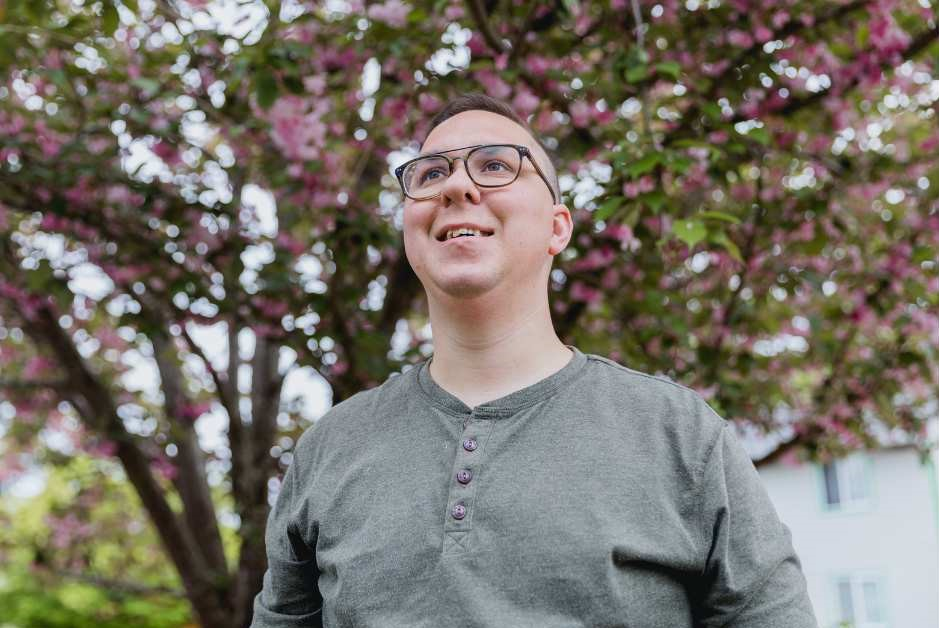Social Pragmatic Communication Disorder vs. Autism Spectrum Disorder
Social pragmatic communication disorder (SCD) and autism spectrum disorder (ASD) can be challenging to distinguish, as they share overlapping symptoms. However, understanding the differences between these two disorders is essential to ensure accurate diagnosis, appropriate treatment, and support for affected individuals.
This article will explore the key distinctions between SCD and ASD, providing a comprehensive overview of each condition. We will also discuss the importance of early diagnosis and intervention and the resources available to support individuals with SCD and ASD and their families.
Defining Social Pragmatic Communication Disorder vs. Autism Spectrum Disorder
Identifying the Overlapping Symptoms
Key Differences Between SCD and ASD
The Importance of Accurate Diagnosis
Treatment Approaches for SCD and ASD
Supporting a Person with SCD or ASD at Home and School
Frequently Asked Questions About Social Pragmatic Communication Disorder
Defining Social Pragmatic Communication Disorder vs. Autism Spectrum Disorder
SCD and ASD are distinct disorders that share similarities but have different diagnostic criteria and characteristics. While both involve difficulties in social communication, ASD also includes repetitive behaviors and sensory sensitivities.
Grasping the differences between these conditions is essential for making a precise diagnosis and providing appropriate treatment.
Social Pragmatic Communication Disorder
Social Communication Disorder (SCD) is a neurodevelopmental disorder that was first recognized as a distinct diagnosis in the DSM-5 in 2013. Individuals with SCD experience persistent challenges in social communication and interaction across multiple settings.
SCD is characterized by difficulties using verbal and nonverbal language for social purposes. This may include trouble greeting others, sharing information, engaging in conversation, understanding and using social cues, and following social rules and conventions.
SCD is diagnosed when another condition, such as autism spectrum disorder or intellectual disability do not better explain a person's social communication difficulties. Additionally, SCD does not involve the repetitive behaviors and restricted interests characteristic of autism.
Autism Spectrum Disorder
Autism Spectrum Disorder (ASD) is a neurodevelopmental disorder that goes beyond the social communication difficulties seen in SCD. Individuals with ASD also display repetitive behaviors, such as hand flapping or rocking, and may have sensory sensitivities, like being overly sensitive to sound, light, or touch.
Social communication challenges in ASD include reduced eye contact, lack of response to their name, and difficulties understanding what others are thinking or feeling. These issues, combined with repetitive behaviors and sensory sensitivities, make ASD a unique and complex disorder requiring a different approach to diagnosis and treatment than social communication disorder.
Identifying the Overlapping Symptoms
One of the reasons it's tough to differentiate between SCD and ASD is the presence of overlapping symptoms, such as:
Difficulty understanding and using verbal and nonverbal communication cues, such as body language, facial expressions, and the tone of one's voice
Difficulty following social rules and conventions, such as turn-taking in conversation and making eye contact
Difficulty using language in a socially appropriate manner, such as understanding sarcasm and humor
Difficulty making and keeping friends
Difficulty interacting with others in social settings
These similarities can make diagnosis challenging, and professionals must carefully assess each case to determine the appropriate diagnosis and intervention.
Here are some specific examples of overlapping symptoms of ASD and SCD:
A child may have difficulty understanding and responding to social cues, such as facial expressions and body language. This may lead them to say or do things that are not appropriate for the situation.
A teenager may have difficulty making and keeping friends. They may not understand how to start and maintain conversations, or they may have trouble reading social cues and interpreting others' intentions.
An adult may have difficulty interacting with others in social settings. They may feel uncomfortable or anxious in social situations, and they may have trouble understanding and responding to others' social cues.
To draw accurate distinctions among these disorders, it is essential to consider their unique characteristics and the specific diagnostic criteria outlined in the Diagnostic and Statistical Manual of Mental Disorders (DSM). Let's explore the key differences between SCD and ASD to understand better how to distinguish between them.
Key Differences Between SCD and ASD
Verbal and Nonverbal Communication
One way to distinguish between SCD and ASD is to consider the severity of the individual's difficulties with verbal and nonverbal communication. Individuals with ASD typically have more severe difficulties with both verbal and nonverbal communication than individuals with SCD.
Another way to distinguish between SCD and ASD is to consider the presence of restricted and repetitive behaviors. Individuals with ASD typically exhibit restricted and repetitive behaviors, while individuals with SCD do not.
It is important to note that there is no single test that can be used to diagnose SCD or ASD. Healthcare professionals will typically consider factors such as the individual's verbal and nonverbal communication skills, the presence or absence of restricted and repetitive behaviors, and the individual's developmental history.
Social Interaction Challenges
Social interaction challenges are an area where SCD and ASD overlap. Both conditions involve difficulties initiating and responding to social cues, making it hard for individuals to engage in typical social interactions. For example, people with SCD or ASD may have trouble with:
Starting and keeping conversations
Reading social cues
Adapting their communication to different contexts
Understanding and using humor
Showing empathy or taking other people's perspectives
Despite these commonalities, recognizing the unique aspects of each disorder is crucial to ensure precise diagnosis and appropriate intervention.
While SCD and ASD involve social communication challenges, crucial differences set them apart. The primary distinction lies in the presence of repetitive behaviors and sensory sensitivities, which are characteristic of ASD but not SCD. Individuals with ASD may also have difficulty with nonverbal communication, which can make social interaction even more challenging. For example, they may have trouble making eye contact, using appropriate facial expressions, and understanding others' body language.
Another way to distinguish between SCD and ASD is to consider the severity of the individual's social interaction challenges. Individuals with ASD typically have more severe social interaction challenges than individuals with SCD.
Grasping these differences helps to ensure the proper diagnosis and intervention, ultimately enhancing life quality for individuals with SCD or ASD.
It is important to note that there is no single test that can be used to diagnose SCD or ASD. Healthcare professionals will typically consider various factors, including the individual's social interaction skills, the presence or absence of restricted and repetitive behaviors, and developmental history.
Repetitive Behaviors and Sensory Sensitivities
Repetitive behaviors and sensory sensitivities are vital features that help differentiate ASD from SCD. Individuals with ASD may display behaviors such as:
hand flapping
rocking
spinning
lining up toys
flipping objects
repeating words or phrases
These behaviors are not seen in individuals with SCD, making them a distinguishing characteristic of ASD.
Sensory sensitivities are another aspect that sets ASD apart from SCD. People with ASD may be overly sensitive to sound, light, or touch, or may not react much to sensory input. These sensory issues are not typically associated with SCD, further differentiating the two disorders.
Diagnostic Criteria
The diagnostic criteria for SCD and ASD, as outlined in the Diagnostic and Statistical Manual of Mental Disorders (DSM), provide clear guidelines for differentiating between the two conditions. For SCD, the diagnostic criteria focus on persistent verbal and nonverbal communication difficulties in social settings, impacting communication, relationships, academics, and job performance.
In contrast, the diagnosis of ASD requires additional symptoms beyond social communication difficulties, such as repetitive behaviors and sensory sensitivities. This distinction in diagnostic criteria helps professionals accurately identify and differentiate between SCD and ASD, ensuring appropriate intervention and support for each individual.
The Importance of Accurate Diagnosis
Precise diagnosis is essential for offering suitable treatment and support for individuals with SCD or ASD. Since both disorders share overlapping symptoms, it's critical to rely on professional assessment to differentiate between the two conditions. Misdiagnosis can lead to inappropriate treatment and support, potentially hindering the individual's progress and development.
Let's take a closer look at the role of professional assessment in ensuring accurate diagnosis and the consequences of misdiagnosis.
Professional Assessment
Many individuals are only diagnosed with autism as adults, and that later diagnosis can influence how professionals interpret social communication profiles during an assessment.
Professional assessment is essential for a precise diagnosis of SCD or ASD. It involves evaluations by experts such as speech-language pathologists, psychologists, and physicians specially trained to recognize the signs and symptoms of these disorders.
These professionals can conduct thorough evaluations — including medical history, physical exams, and various standardized assessments — to accurately identify the presence of SCD or ASD.
Cooperation among parents, teachers, and professionals is vital for fostering an all-encompassing understanding of the adult’s or child’s needs and providing suitable support. By working together, parents and professionals can:
Share information and observations about the adult’s or child’s behavior and development
Collaborate on developing a personalized intervention plan
Coordinate efforts to implement the plan and monitor progress
Exchange feedback and make adjustments as needed
This collaborative approach ensures that the person receives comprehensive support that addresses their unique challenges and strengths.
Consequences of Misdiagnosis
Misdiagnosis of SCD or ASD can significantly affect individuals and their families. Inaccurate diagnosis can delay receiving the right help, lack of understanding in educational and social settings, and inappropriate therapy and treatment.
Consequently, this can substantially impact the individual's social and emotional well-being and cause confusion and frustration for the individual and their family.
On the other hand, precise diagnosis guarantees that individuals receive suitable interventions and support tailored to their specific needs, ultimately enhancing their quality of life and fostering their development. Collaboration between families and professionals is vital to ensure the best possible outcomes for individuals with SCD or ASD.
Treatment Approaches for SCD and ASD
Treatment approaches for SCD and ASD often involve speech and language therapy and social skills training, although the focus and techniques may differ depending on the specific disorder. Both interventions aim to improve communication skills and understanding of social cues, ultimately enhancing the individual's ability to navigate social situations and form meaningful relationships.
Let's explore the role of speech and language therapy and social skills training in treating SCD and ASD.
Speech and Language Therapy
Speech and language therapy is a common treatment for both SCD and ASD, focusing on improving communication skills and understanding of social cues. For individuals with SCD, therapy may involve working on pragmatics, or the social aspects of communication, to help them use language more effectively in social situations.
In ASD, speech and language therapy may address a broader range of communication challenges, including difficulties in understanding and using nonverbal cues, initiating and maintaining conversations, and adjusting speech to match the context. In some cases, augmentative and alternative communication methods may be explored to support individuals in expressing themselves more effectively.
In both cases, speech and language therapy aims to enhance the individual's communication abilities, particularly in social settings. Working with speech-language pathologists, therapists can offer guidance and resources to assist parents and educators in implementing strategies to enhance communication skills at home and school.
Social Skills Training
Social skills training for adults and social skills training for children can be beneficial in developing appropriate social behaviors and responses.
This type of intervention may involve peer-mediated approaches, where adults and children with SCD or ASD learn social skills through interactions with their peers or using social stories, which are short narratives that help individuals understand social situations and appropriate responses.
Social communication training can be delivered by a variety of professionals, including:
Speech-language pathologists (SLPs)
Applied behavior analysts (BCBAs)
Occupational therapists (OTs)
Social workers
Psychologists
Educators
SLPs are the most common providers of social communication training, as they have the specialized training and expertise to assess and address social communication difficulties. However, other professionals may also provide social communication training, especially if the individual has additional needs, such as behavioral challenges or cognitive impairments.
In the case of a child having SCD or ASD, cooperating with professionals allows parents and educators to put social skills training strategies into practice at home and school, establishing a supportive and consistent environment for children with SCD or ASD to cultivate their social communication skills.
Supporting a Person with SCD or ASD at Home and School
Supporting a person with SCD or ASD at home and school involves creating a supportive environment, collaborating with professionals, and implementing strategies to encourage social communication and interaction.
By fostering a nurturing and understanding atmosphere, parents and educators can help individuals with SCD or ASD feel more comfortable and confident in their social interactions, ultimately promoting their development and well-being.
Creating a Supportive Environment
Creating a supportive environment at home and school can help a person with SCD or ASD feel more secure and confident in their social interactions. This may involve ensuring a safe and secure environment, establishing clear expectations, and fostering positive behavior.
Teachers and staff can create a supportive atmosphere at school by providing accommodations and modifications tailored to the individual's needs, such as visual supports, social skills training, and additional time or assistance during activities. These strategies can help children or adults with SCD or ASD thrive in home and school settings, fostering their social and emotional growth.
Collaborating with Professionals
Working together with professionals, like speech-language pathologists and therapists, can offer invaluable guidance and resources for parents and educators to support a person with SCD or ASD effectively. By working together, parents, teachers, and professionals can develop a personalized intervention plan tailored to the unique challenges and strengths of the person.
In addition to providing direct support and interventions, professionals can offer education and training on promoting social communication and interaction in various settings. This collaboration ensures a comprehensive and consistent approach to supporting an individual with SCD or ASD, maximizing their potential for success.
Frequently Asked Questions About Social Pragmatic Communication Disorder
1. What is the difference between ASD and social communication disorder?
Autism Spectrum Disorder (ASD) includes social communication difficulties and restrictive or repetitive behaviors. Social Communication Disorder (SCD) affects an individual's ability to communicate effectively but does not include the same restrictive or repetitive behaviors seen in ASD.
2. Is social communication disorder related to autism?
Social communication disorder and autism are two distinct conditions, although they may share similar symptoms. SCD has its own diagnosis criteria and treatment approach, while autism spectrum disorder is marked by restricted, repetitive patterns of behavior and social communication problems. Both require different interventions to support the individual's development.
3. Is social pragmatic communication disorder a disability?
Social pragmatic communication disorder is indeed a disability, making it difficult for those affected to understand the underlying meaning conveyed by tone and engaging in "small talk" or other communication.
How Connected Speech Pathology Can Help You
Connected Speech Pathology's team of experienced SLPs can help individuals and their families navigate the diagnostic process and develop a deep understanding of these conditions. We aim to provide clarity and support, ensuring that individuals receive the most appropriate interventions to address their unique needs.
Our SLPs can conduct comprehensive assessments to differentiate between these disorders and guide individuals and their families.
Our expertise in speech and language disorders allows us to guide individuals toward improved social communication skills, whether the challenge is SCD, ASD, or a combination of these factors, ultimately fostering better social interactions and enhancing the overall quality of life.
Summary
Differentiating between social pragmatic communication disorder (SCD) and autism spectrum disorder (ASD) can be challenging due to their overlapping symptoms. However, understanding the differences between these disorders is crucial for accurate diagnosis and appropriate treatment.
By creating a supportive environment, collaborating with professionals, and implementing effective interventions, parents and educators can help children or adults with SCD or ASD develop their social communication skills and confidently navigate social situations. Together, we can make a difference in the lives of those affected by these disorders.
About the Author
Allison Geller is a communication coach, speech-language pathologist, and founder of Connected Speech Pathology, an international online practice providing professional communication coaching and speech therapy for children, teens, and adults. With more than two decades of experience, she has worked in medical and educational settings, published research on aphasia, and leads a team of specialists helping clients improve skills in public speaking, vocal presence, accent clarity, articulation, language, fluency, and interpersonal communication.









